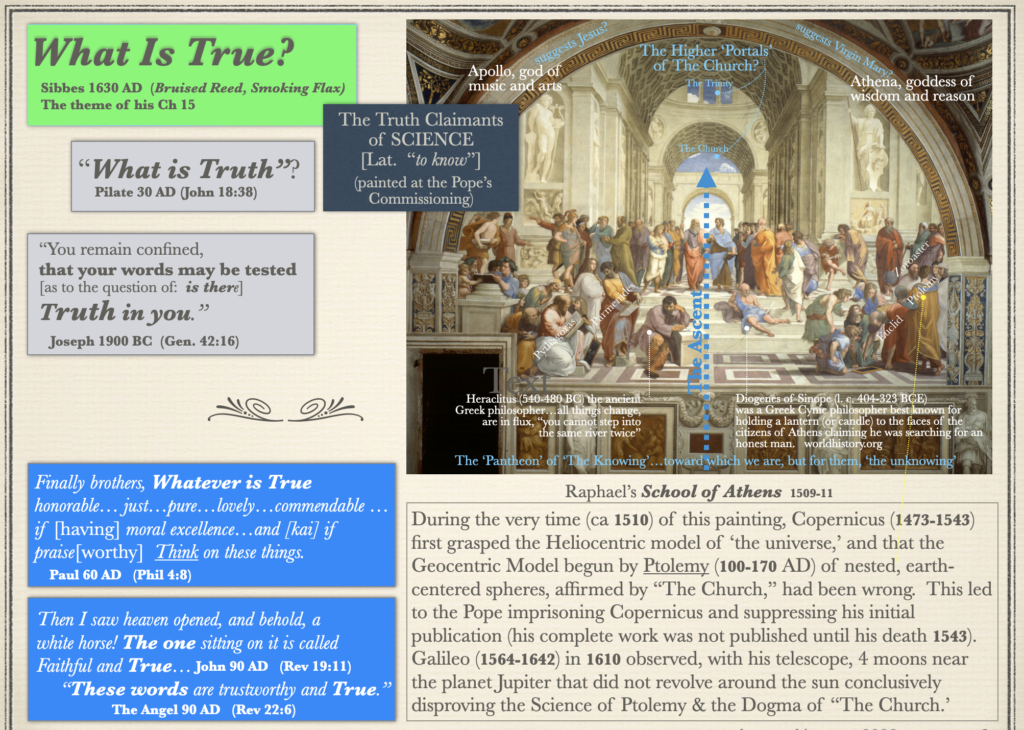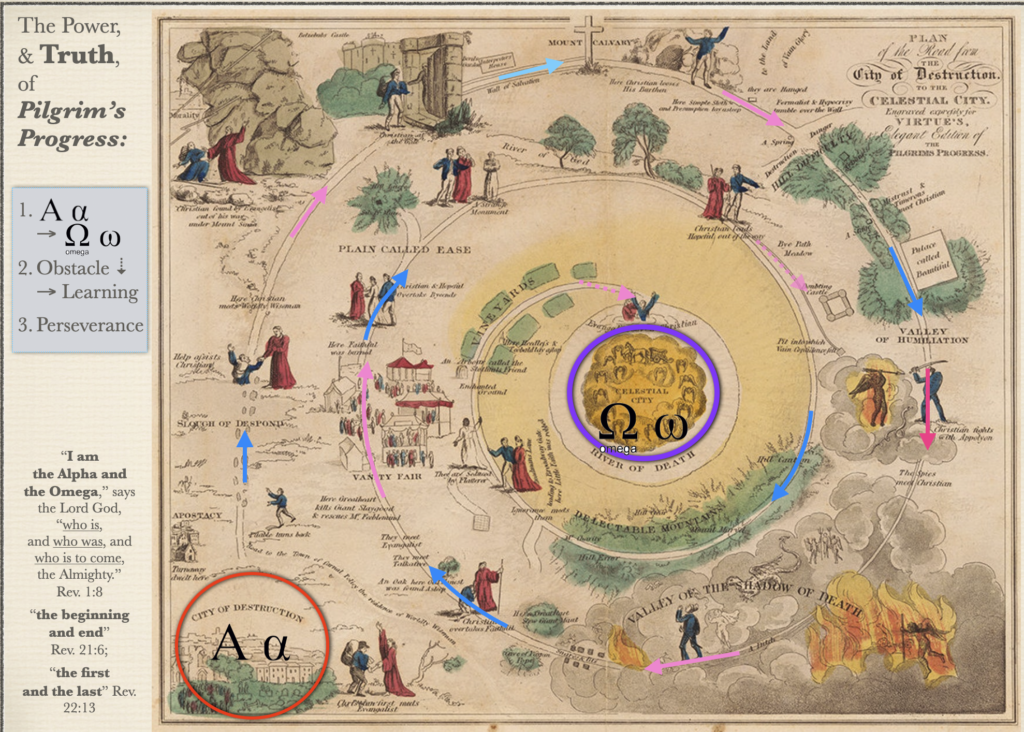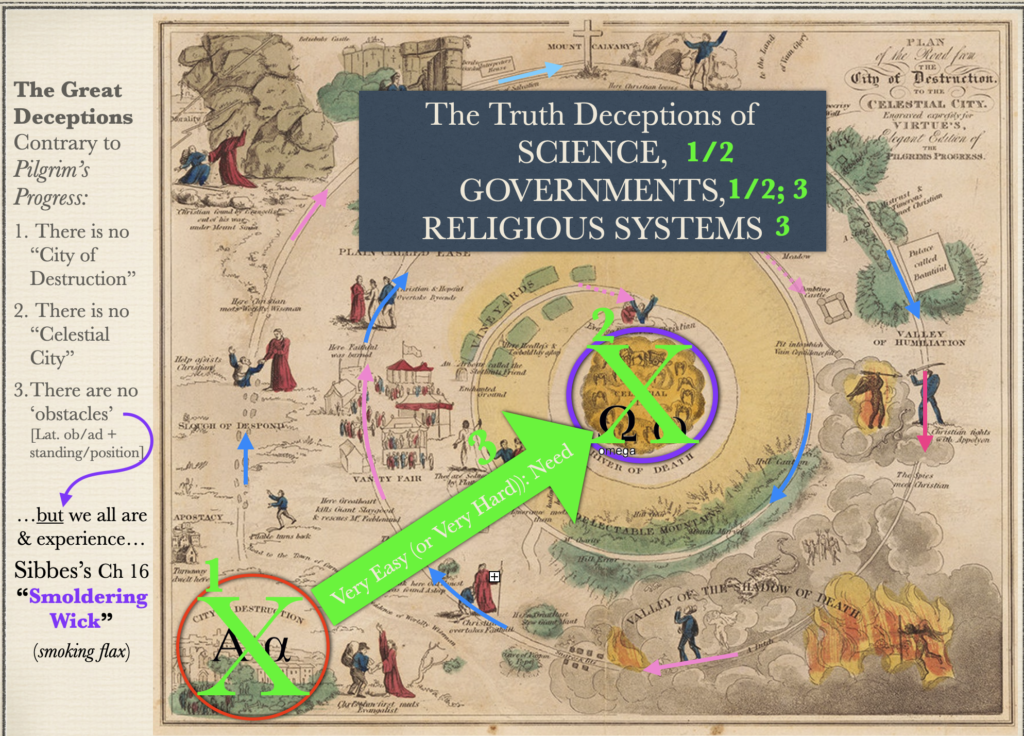Sibbes Ch 16: Through Conflict to Victory
In this closing chapter of Sibbes’s book, he connects several key ideas:
- Despite the truth of our being “bruised reeds / smoking flax,” as the Scriptures teach,
- And that “life” here as such, and in Christ, is a journey of conflict and difficulty of many forms, and periods of time,
- Yet there is the staying hand of God who knows, and controls, all that happens to us in an incomprehensible harmony with His purposes for all people and this time,
- With the ultimate end that Christ will be physically, imminently, completely, and eternally victorious.
How this happens is not clear to us, and at times seems contrary to all experience and feelings. Yet it is so.
The Challenge of Recognizing What is True
The question of what is “True” is the oldest wonder. In the first scene we have after the great Creation Record of Gen Ch 1-2 we see in Gen Ch 3 the Serpent’s narrative concerning his claim as to the “truth” of that particular tree, and boundary, the “tree of the knowledge of good and evil.” The very word “knowledge” presumes that the object of such knowing is true in the sense of conforming to reality. What happened was the very motive of the Lord God was called into question, and the promise was made that violating such command was the gateway to becoming like “god,” which evil impulse was Satan’s first impulse in the dateless past.
So, what is “true?” How can be “know” that that which we can “know” is “True?” This is among the oldest questions, too, of philosophy and everyday life. The philosophical category of the question is known as “Epistemology.”
The Conflict of Truth: The Bible and any Contrary Claims of Man
In the image embedded below is a brief portrayal of this question aligned to the issue of Sibbes Ch 16, namely the obstacle-experience, discouragements, even despair, of our life’s journey. The first chart, directly below, summarizes on the left-hand side, the Biblical scope of “Truth” from its first use in Gen to its final use at the end of Revelation, with two important intervening uses. On the right-hand is an artistic synopsis of the efforts of man seeking “to know” what is True and to establish a methodology (or methodologies) for determining such.

As discussed in Sibbes Ch 15, that chapter had underlying it the question of “truth.” Such is its practical application in Ch 16 as applied to our Christian walk. Pilate, facing the very embodiment of “Truth” spoke his demand for it, and likely his frustration for determining it or any reliable process for discerning it. The first occurrence of “Truth” is the encounter of Joseph’s brothers with Joseph then as ruling Regent in the mightiest empire of its time, Egypt, second only to Pharaoh. That family line from Abraham had not been truth-tellers as evidenced by numerous examples. The exemplar was the face-to-face encounter at Gen 42. The issue of a great lie, namely that Joseph had been killed by a wild animal when in fact he had been sold into slavery by his own brothers, was exactly right there, just as it was with the Jewish Leaders presenting Jesus to Pilate for crucifixion on the charge that he was an insurrectionist and threat to Caesar when it was His threat to the “religion” and authority of the Leaders themselves. Further down on the left-hand side of the above chart we see the important admonition of our thought life begun and ending with what is true. And finally, at the very end of Revelation we see Him Who is True, and the angel telling the Apostle John that what he had experienced and recorded in this ultimate book of the Bible was indeed “True.”
The Application of “Truth” to our Journeying in Life
One of the great books of our Christian library is Bunyan’s Pilgrim’s Progress. It is not, of course, Scripture, nor is it any infallible revelation subsequent to the Bible. But there is a reason that it has endured as the most-popular, or close to that. of any Christian book outside of the Bible itself, for the more than 350 years since its writing. What is further remarkable is that John Bunyan was a ‘nobody’ in terms of educational or church standing. He was literally a tinkerer (an itinerant laborer who went about fixing pots and pans with his portable anvil and hammers and tongs). He was also a Baptist preacher who refused to accept the religious authorities demanding his conforming to the then Church of England’s formal system. For that he was jailed for more than a decade, during which time he wrote this wonderful book.
In the image below is a graphic summary of the story of the man Christian who is awakened to faith in his home city, “The City of Destruction,” and called to journey to “The Celestial City.”

There are, I think, three primary reasons why Bunyan’s book has had such communicative power. First it depicts a journey between two specific end points, his beginning condition as a resident of a city doomed to destruction, and his end destination, the Celestial City. Second, that journey was an experience of repeated encounter with obstacles and conflicts, some internal, some external. Bunyan’s genius in these encounters is that the reader can readily identified with parallels in one’s own life, again and again in one’s reading at different stages of life such that it seems as thought we each experience every one of them. Third, is that Christian learns and perseveres, sometimes just barely, through and by means of such conflicts, a message we all need to be re-portrayed, as that is to be our experience as well, and is the central theme of Sibbes Ch 16.
False Religions and Their Contrary Message to Bunyan’s
There has always existed error, even, especially, conscious error otherwise known as “deceit.” Religious contexts, along with political contexts, much like used car lots, are the unholy ground where such deceit is most likely and most perniciously to be found. Consider the below chart:

Basically, what the above is seeking to show that such deception exists to deny both of the end points of Bunyan’s story, namely that there is no present “City of Destruction” in the sense of being under God’s Judgment nor is there a heavenly destination. Another form of deception for those who admit some form of both end points is that the route there can be both easy and very very difficult: easy if one ‘obeys’ the authority of such deception and very very difficult as to what such ‘obedience’ entails; in other words, there exists no true Redemption, Salvation, Grace, but what remains is what it is that one can and must do, enabled by such human authority. Such as was the case under the religious industry during the earthly life of Jesus so has it been and is today.